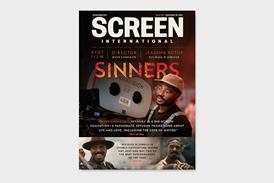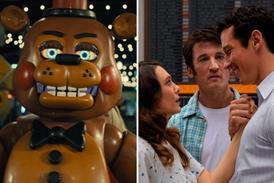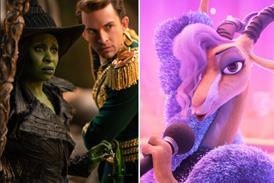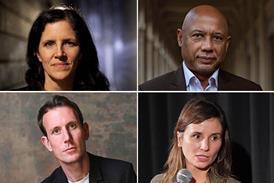Dir/scr. Paul Greengrass. US-UK. 2006.110mins.
Gut wrenching and chilling, Paul Greengrass' United 93is a visceral recreation of the September 11 terrorist attacks that sharplydraws on the film-maker's documentary background. The result is a searingcollage, couched in sorrow and conjuring up mournful chaos and dread.
Features of this scaleclearly are neither made nor witnessed in a vacuum, and no recent film hasclaimed such a peculiar and unsettling fixation on the collective USconscience. In New York, the trailer occasioned some angry customer complaintsthat forced Universal to substitute an alternate version.
The domestic commercialprospects for United 93 are difficultto forecast. For many Americans, the horrifying imagery and emotionaldisruption of that day are still too wounding. To its credit, UniversalPictures has shown both tact and sensitivity. The feature opens the Tribeca Film Festival in New York on April 25, after which 10percent of its opening weekend grosses will be earmarked for a special Flight93 memorial fund.
Just as some people willfind the work exploitative of a national tragedy, so others will regard it aform of tribute to the heroism and moral tenacity of the flight's passengersand their uprising against the plane's hijackers.
Smartly, the film-makersrealise they are able to neither satisfy everyone nor answer the unknowable.They make a vivid pictorial re-enactment of an excruciating moment in time.
Curiosity, strong criticalreviews and the ongoing public debate should drive a healthy opening weekend inthe US next Friday (April 28), where the lack of serious, adult-oriented dramasmay help, with possibly strongest play on television and DVD
Internationally, United 93 has been awarded a prominentout of competition slot at Cannes which, in collaboration with its French andUK financial backing, should boost its profile in Europe. Ironically, thefactors that typically inhibit a film's box-office potential - such as the lackof a box office star - should prove less restrictive here, given the notorietyof the material and the heightened awareness of the story.
In the nearly five years sinceSeptember 11, American cinema has obliquely and bluntly addressed repercussionsof that day through the likes of Steven Spielberg's unusual trilogy thatencompassed The Terminal, War Of The Worlds and Munich. But along with Oliver Stone'sforthcoming World Trade Center - due out later this year - United 93 is one of the first large-scale studio movies to tacklethe subject head on.
As a non-American, British film-makerPaul Greengrass proves an inspired director for thistype of material, demonstrating with his masterful Bloody Sunday a particular talent for historical recreation. Shotby Ken Loach's frequent cinematographer Barry Ackroyd, the film has an unvarnished visual quality,potently suggesting how everyday movements and rhythms of easy, spontaneousbanter, suddenly gave way to confusion and terror.
The story of the fourthhijacked jetliner that crashed in a Pennsylvania field 81 minutes after take-off,United 93 is riveting and tense, andit features some virtuoso moments of electric editing and intricatecrosscutting that create a bruised, cascading symphony of confusion anddisorder.
It is also somewhat cold anddetached emotionally. In a disclosure at the end, the film-makers admit United 93 is by necessity an act ofinformed conjecture about how a band of passengers tried to reclaim control ofthe airplane. Greengrass does not automaticallydemonise the terrorist hijackers, but he also omits critical emotional andcharacteristic details about the passengers, a particular weakness given thestory's grim foreordained resolution.
The title (changed in post-productionfrom Flight 93) is misleading given howthe film is concerned with much more than just the San Francisco-bound flightthat left Newark Airport at 8.42 am.
Greengrass breaks down the movement and speed of events, and heis particularly good at working in claustrophobic, restrictive spaces. The filmshuttles, sharply and persuasively, from a succession of traffic controloperations in Boston, New York and Cleveland, to the Federal AviationAdministration's command centre in Virginia, and the Northeast Air DefenceSector in New York.
The airline passengers andterrorists are played by talented, workmanlike character actors, deliberatelysomewhat anonymous and unformed, and the uprising against the hijackers is acollective movement for survival and self-determination.
By contrast, the militaryand government personnel largely play themselves: Ben Sliney,for instance, also an adviser on the film, was on his first day as the FAA's operations director. Lacking the technical precisionof the professional cast, they lend an emotional verisimilitude that heightensthe documentary naturalism.
Dramatically, Greengrass' script is strongest at integrating the story ofthe doomed flight against the frantic timeline of that day's unfolding tragedy.The first giveaway of the possible hijacked flights and their strange,unaccounted radio transmissions ("We have some planes") is set against theincredulous flight controllers struggling to understand the enormity of thesituation.
Greengrass brilliantly ruptures the already tattered narrativeby cutting to a CNN broadcast showing the devastating image of the second jetstriking the World Trade Center. Aided by the excellentediting of Clare Douglas, Christopher Rouse and Richard Pearson, he acceleratesthe tempo, shifting the balance of the action to the interior of the airplaneas the takeover and reprisal unfolds in real time.
The film originally endedwith a title card announcing, "America's war on terror had begun.", now replacedby something more sobering and reflective. United93 is tough, taut and imaginative, and conveyed withits director's usual verve and declarative style. It is flawed though neverless than absorbing.
Production companies
Universal Pictures
Studio Canal
Working Title Films
Sidney Kimmel Entertainment
US distribution
Universal Pictures
International distribution
UIP
Executive producers
Debra Hayward
Liza Chasin
Producers
Tim Bevan
Eric Fellner
Lloyd Levin
Paul Greengrass
Cinematography
Barry Ackroyd
Editors
Clare Douglas
Christopher Rouse
Richard Pearson
Production design
Dominic Watkins
Music
John Powell
Main cast
David Alan Basche
Richard Bekins
Susan Blommaert
Ray Charleson
Gregg Henry
David Rasche
Rebecca Schull
Christian Clemenson
JJ Johnson
Khalid Abdalla
Lewis Alsamari
Omar Berdouni
Jamie Harding
Ben Sliney
Major James Fox



















No comments yet